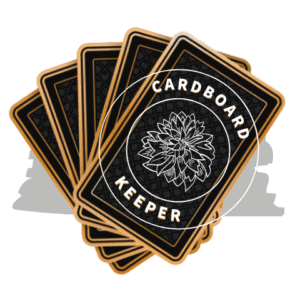When I started playing Magic The Gathering over 10 years ago, Planeswalkers and summoning sickness was something that I struggled to wrap my head around. MTG Planeswalkers can be a difficult card type to understand and with them coming in many shapes and sizes, it can be hard to tell if they are affected by summoning sickness and if it’s something you have to worry about.
As a general rule, Planeswalkers do not have summoning sickness. Planeswalkers are able to activate their abilities on the same turn they are played in Magic The Gathering. Some Planeswalkers have the ability to become creatures which will make them subject to summoning sickness.
As summoning sickness doesn’t affect Planeswalkers most of the time, it can be easy to make fatal mistakes in games with certain Planeswalkers, which can lead you to losing the game.
I know that happened to me more than a few times when I started playing Magic The Gathering.
I’ll tell you everything you need to know so you don’t end up like me, and get caught off-guard by Planeswalkers and summoning sickness.
Overview: Planeswalkers + Summoning Sickness
| Planeswalker Status | Planeswalker’s 1st Turn in Play | Planeswalker’s 2nd Turn in Play |
|---|---|---|
| Normal | NO | NO |
| Becomes a creature | YES | NO |
| Becomes a creature + Haste | NO | NO |
| Has Summoning Sickness? | Has Summoning Sickness? |
Do Planeswalkers Have Summoning Sickness?
The best way to know whether your Planeswalker can be affected by Summon Sickness is to fully understand what “Summon Sickness” is in a game of Magic The Gathering.
The single most important thing you need to know about summoning sickness is that it only affects creatures.
302.6. A creature’s activated ability with the tap symbol or the untap symbol in its activation cost can’t be activated unless the creature has been under its controller’s control continuously since his or her most recent turn began. A creature can’t attack unless it has been under its controller’s control continuously since his or her most recent turn began. This rule is informally called the “summoning sickness” rule.
Official Magic The Gathering Rulebook / Glossary[1]
As you can see from Magic The Gathering’s official ruling, only creatures are affected by rule “302.6” – the summon sickness rule.
This means most of the time that you find yourself in a game, you will be fine to cast and activate your Planeswalker without any issues.
However, MTG isn’t always that simple.
There are Planeswalkers that not only create their own creatures that can be affected by summoning sickness, but some Planeswalkers can become creatures themselves!
These occurrences often create confusion with newer players as the ruling doesn’t specifically mention what happens when something becomes a creature, or when a creature is created by a Planeswalker.
Summoning Sickness: Planeswalkers that become creatures
To explain what happens to Planeswalkers that become creatures and how Summoning Sickness affects them, let’s look at an example – “Gideon, Ally of Zendikar“.
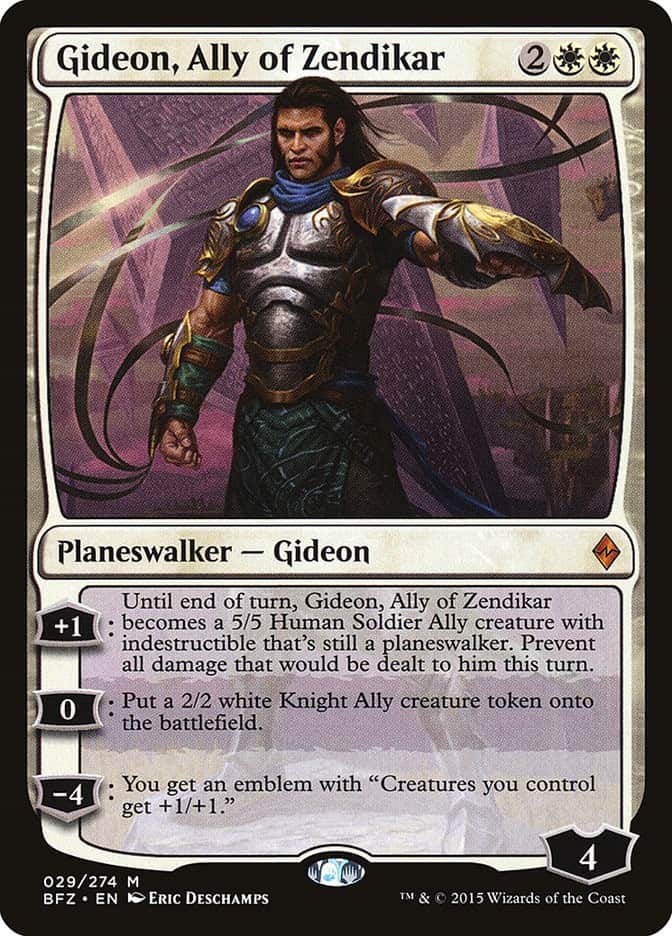
+1: Until end of turn, Gideon, Ally of Zendikar becomes a 5/5 Human Soldier Ally creature with indestructible that’s still a planeswalker. Prevent all damage that would be dealt to him this turn.
Magic The Gathering Gatherer – Gideon, Ally of Zendikar[2]
Gideon was a Planeswalker well known for normally having some kind of ability that allows him to become a creature whenever he showed up on a Planeswalker card – Understanding this example should set up for success in understanding Summon Sickness and Planeswalkers.
Unless there is another card in play preventing Gideon from doing so, Gideon will always be able to activate one of his 3 loyalty abilities the same turn he is played.
When Gideon enters the battlefield, he is a Planeswalker, and Summon Sickness only affects creatures.
However, if you activate Gideon’s +1 ability, things change.
Gideon’s +1 ability turns him into a creature, but he is also still a Planeswalker!
Meaning until the end of your turn after activating Gideon’s +1 ability, Gideon is both a Creature and a Planeswalker.
It is important to remember in Magic The Gathering, that a card that is multiple card types (Planeswalker, Creature, Enchantment, etc.) is subject to all rules that apply to any of the card types they possess.
Therefore, Gideon is allowed to activate any ability he has on the same turn he is played, but as soon as Gideon’s +1 ability resolves and becomes a creature, he will gain Summoning Sickness.
You are not allowed to attack with Gideon if you have turned him into a creature and it’s his first turn in play. Not only that, but if you have somehow given Gideon a “Tap” ability, he will not be able to activate that ability either after becoming a creature.
If Gideon becomes a creature the same turn he enters the battlefield, you can’t attack with him or use any of his Tap abilities (if he gains any).
Magic The Gathering Gatherer – Gideon, Ally of Zendikar[3]
The key takeaway here if you are playing with Gideon, Ally of Zendikar in your deck is, most of the time, you won’t want to activate his +1 ability the first turn he comes into play.
Since he won’t be able to attack right away, you are better off choosing to activate one of his other abilities first, and then choosing to activate his +1 on your next turn.
On your second turn with Gideon in play, you’ll be able to attack since Gideon has been on the battlefield for more than a single turn – even if it’s his first turn as a creature, summoning sickness won’t apply since it’s not Gideon’s first turn in play overall.
The above might be a lot for you to take in on your first try, but take your time, and just reread the example a few more times before moving on.
If you wrap your head around how Gideon, Ally of Zendikar’s +1 ability interacts with the summoning sickness rule, then you’ll have a strong foundation for understanding 90% of how all Planeswalkers interact with this rule.
However, there is one more thing we need to look at before we have a complete understanding of summoning sickness and how Planeswalkers that become creatures interact with it.
Summoning Sickness: Planeswalkers with Haste
Everything we mentioned above still holds true here.
However, haste is a universal way for any creature to get around summoning sickness.
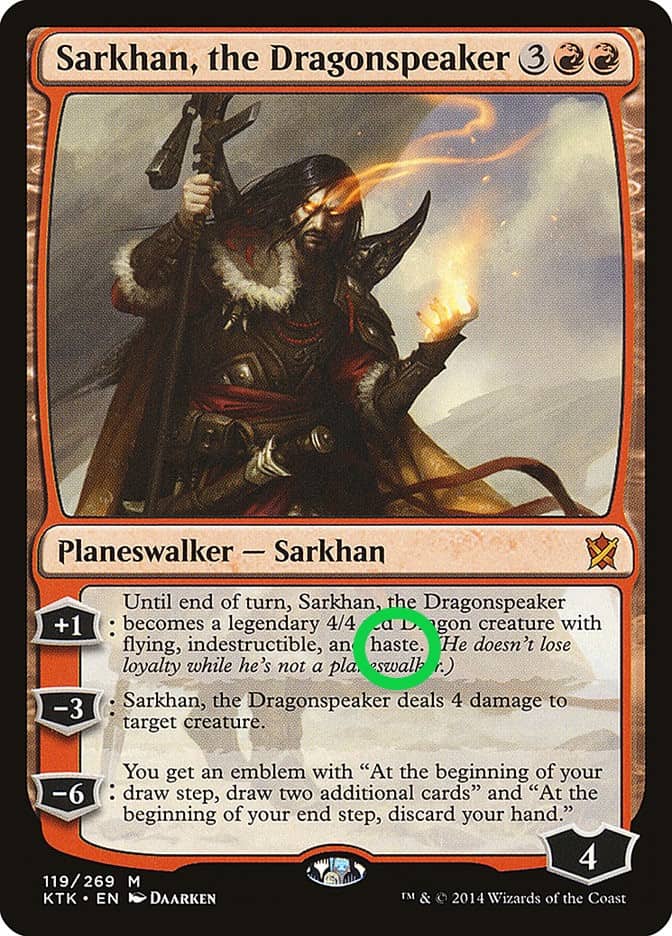
+1: Until end of turn, Sarkhan, the Dragonspeaker becomes a legendary 4/4 red Dragon creature with flying, indestructible, and haste. (He doesn’t lose loyalty while he’s not a planeswalker.)
Magic The Gathering Gatherer – Sarkhan, the Dragonspeaker[4]
Just like Gideon, Ally of Zendikar, “Sarkhan, the Dragonspeaker” is a Planeswalker that has the ability to become a creature using his +1 ability.
The critical difference between these 2 cards is that Sarkhan, the Dragonspeaker’s +1 not only turns him into a creature, but it also gives him “Haste“.
702.10b If a creature has haste, it can attack even if it hasn’t been controlled by its controller continuously since their most recent turn began. (See rule 302.6.)
magicjudges.org – Official Magic The Gathering Rulebook / Glossary[5]
702.10c If a creature has haste, its controller can activate its activated abilities whose cost includes the tap symbol or the untap symbol even if that creature hasn’t been controlled by that player continuously since their most recent turn began. (See rule 302.6.)
Without this addition of the Haste ability, Sarkhan would be in the exact same situation as our previous Planeswalker card – not able to attack on the first turn it’s played.
However, since this Planeswalker has Haste when it becomes a creature, it gets to completely ignore the summoning sickness rule – Sarkhan can attack your opponent’s face as a 4/4 flying dragon the very same turn it comes into play!
Crunch!
When it comes to Planeswalkers and summoning sickness that’s pretty much everything you need to know.
As long as you keep the 2 examples above in mind, you shouldn’t have to ever worry about getting caught out in a game of Magic The Gathering when it comes to Planeswalkers and summoning sickness.
I could end the article here and you could stop reading, but I feel it’s important to warn you about a common occurrence that indirectly involves Planeswalkers and summoning sickness that a lot of new players can be surprised by.
Summoning Sickness: Permeants becoming creatures
There are quite a few Planeswalkers in Magic The Gathering that either create their own token creatures or turn other permanents into creatures.
There are no new rules to learn here, but there is a warning you should heed when using Planeswalkers in a game of Magic – a warning that if ignored, will end up with you potentially losing games of Magic.
Let’s take our boy Gideon, Ally of Zendikar again, but this time focus in on his second ability.
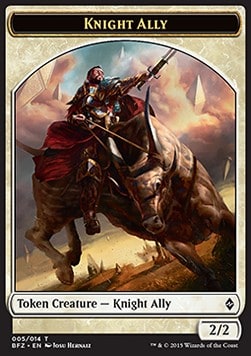
0: Create a 2/2 white Knight Ally creature token.
Gideon, Ally of Zendikar
There are no tricks to be had here.
You’ll know from what we have already discussed that the token created by Gideon is a creature token, therefore it enters the battlefield after being created by Gideon with summoning sickness.
Gideon’s tokens do not have haste and so they have to wait until next turn to attack.
This should all sound very familiar to you at this point, but what if we changed the Planeswalker we are talking about to Koth?
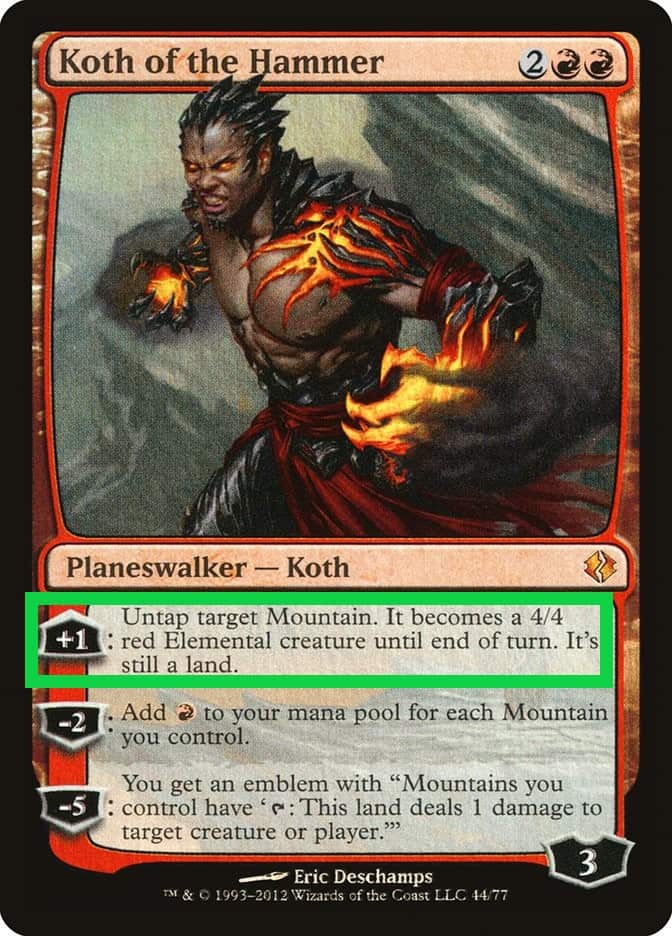
+1: Untap target Mountain. It becomes a 4/4 red Elemental creature until end of turn. It’s still a land.
Koth of the Hammer
Koth’s +1 ability turns one of your lands into a 4/4 creature. Note that is does not give the Land the “Haste” ability.
Question: Does the creature you just created with Koth have summoning sickness?
The answer is – it depends…
If you have Koth turn a Land that entered the battle this turn into a creature, then that creature will have summoning sickness!
If you choose a Land that has been on the battlefield for more than one turn to become a creature, then that creature won’t have summoning sickness and can attack this turn.
The warning here is to keep track of which Lands and permeants enter play during your turns.
In a competitive game of Magic The Gathering, if you select the wrong Land to turn into a creature with Koth’s ability, you can’t take it back – you’ll be stuck with a creature that has summoning sickness instead of one that can attack your opponent’s face.
This warning goes for any permanents that you plan on turning into creatures with Planeswalkers or by any other effect in the game.
I’ve made this very mistake enough times when I played a deck called “Skred Red” in Modern that had copies of Koth of the Hammer in it – it isn’t a fun mistake to make, especially more than once!
As long as you keep all the above in mind, you should be ready to rock and roll when it comes to everything related to Planeswalkers and summoning sickness – go forth and conquer the multiverse!
Just make sure that you don’t get sick…
